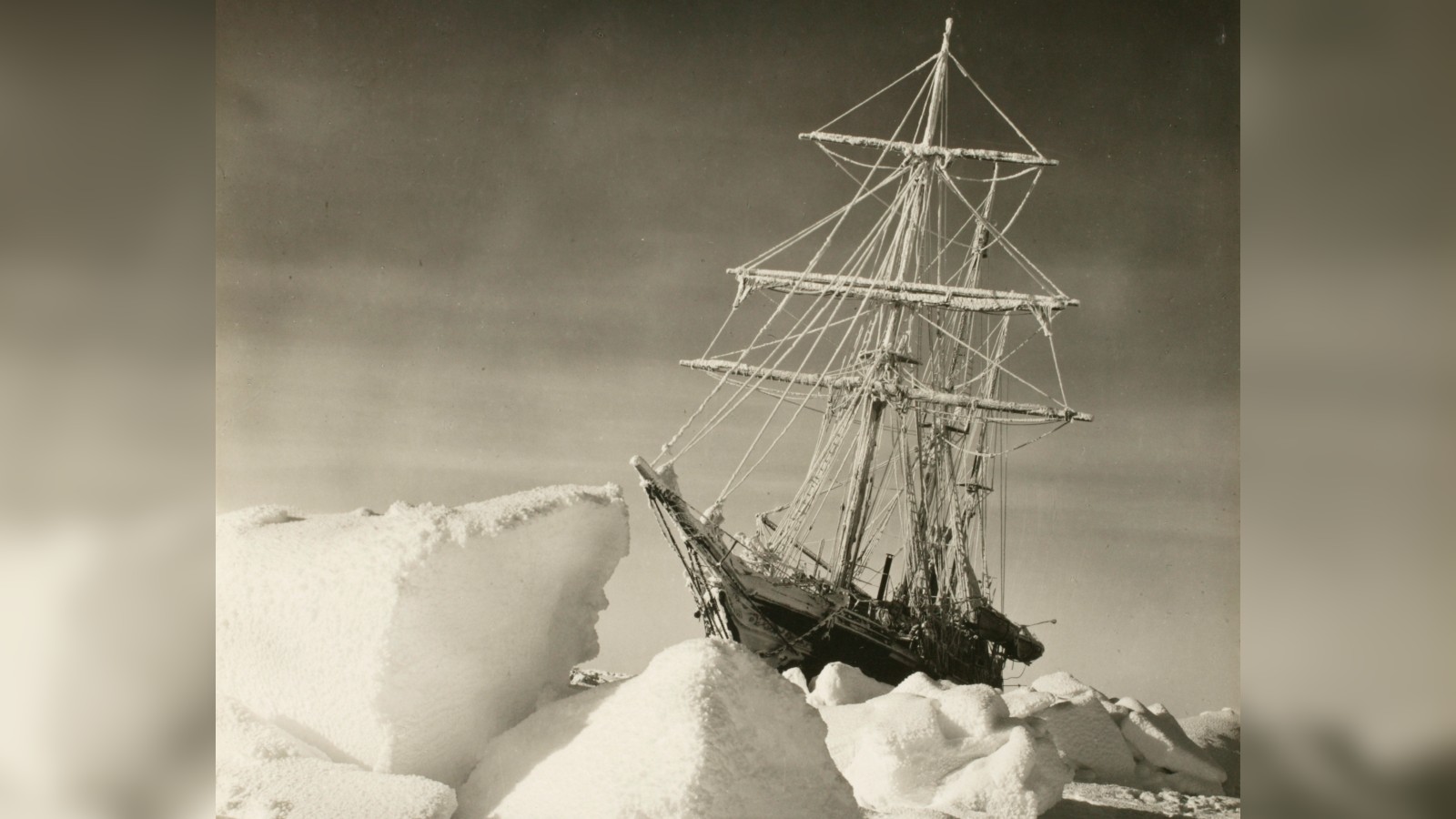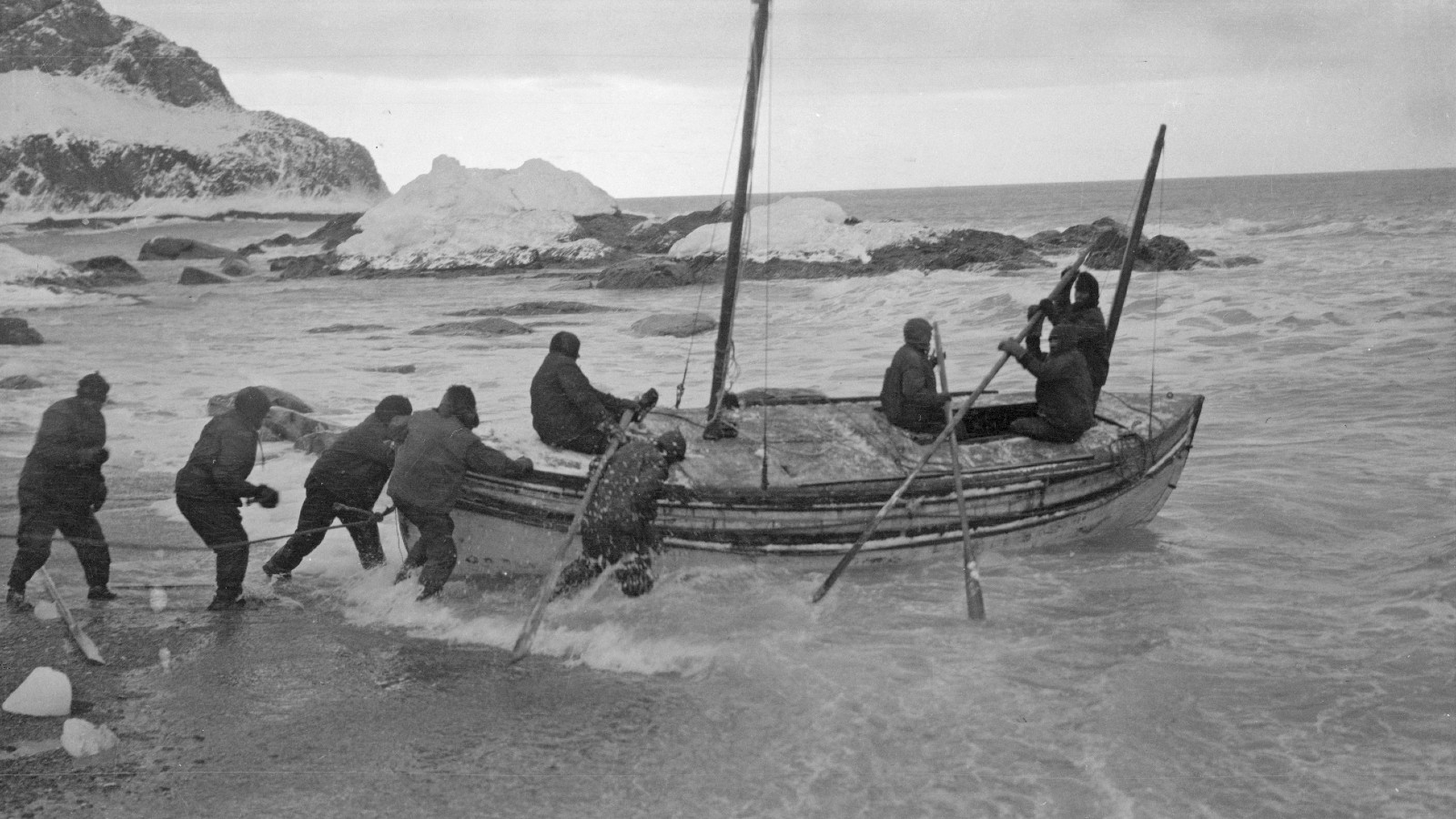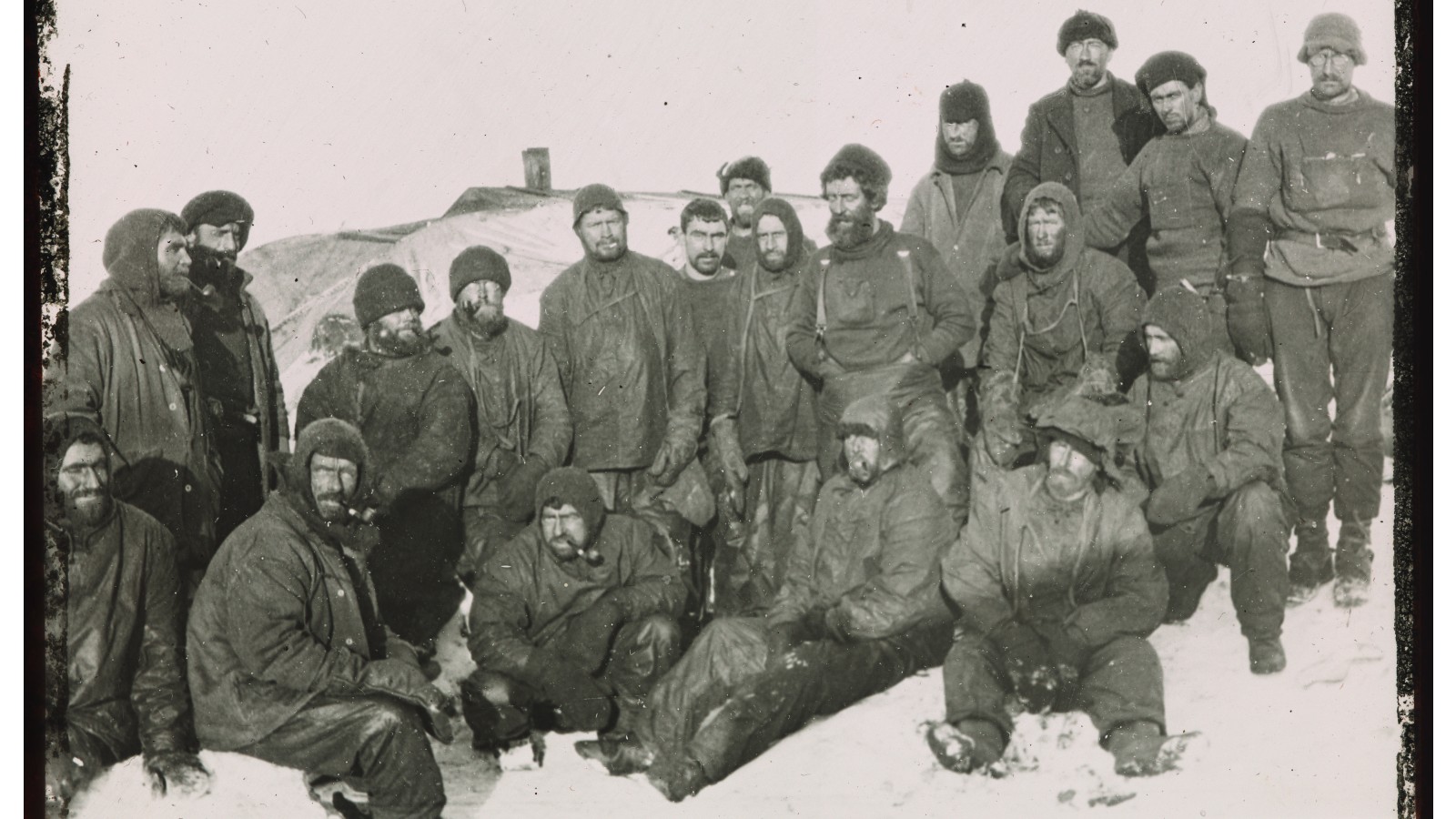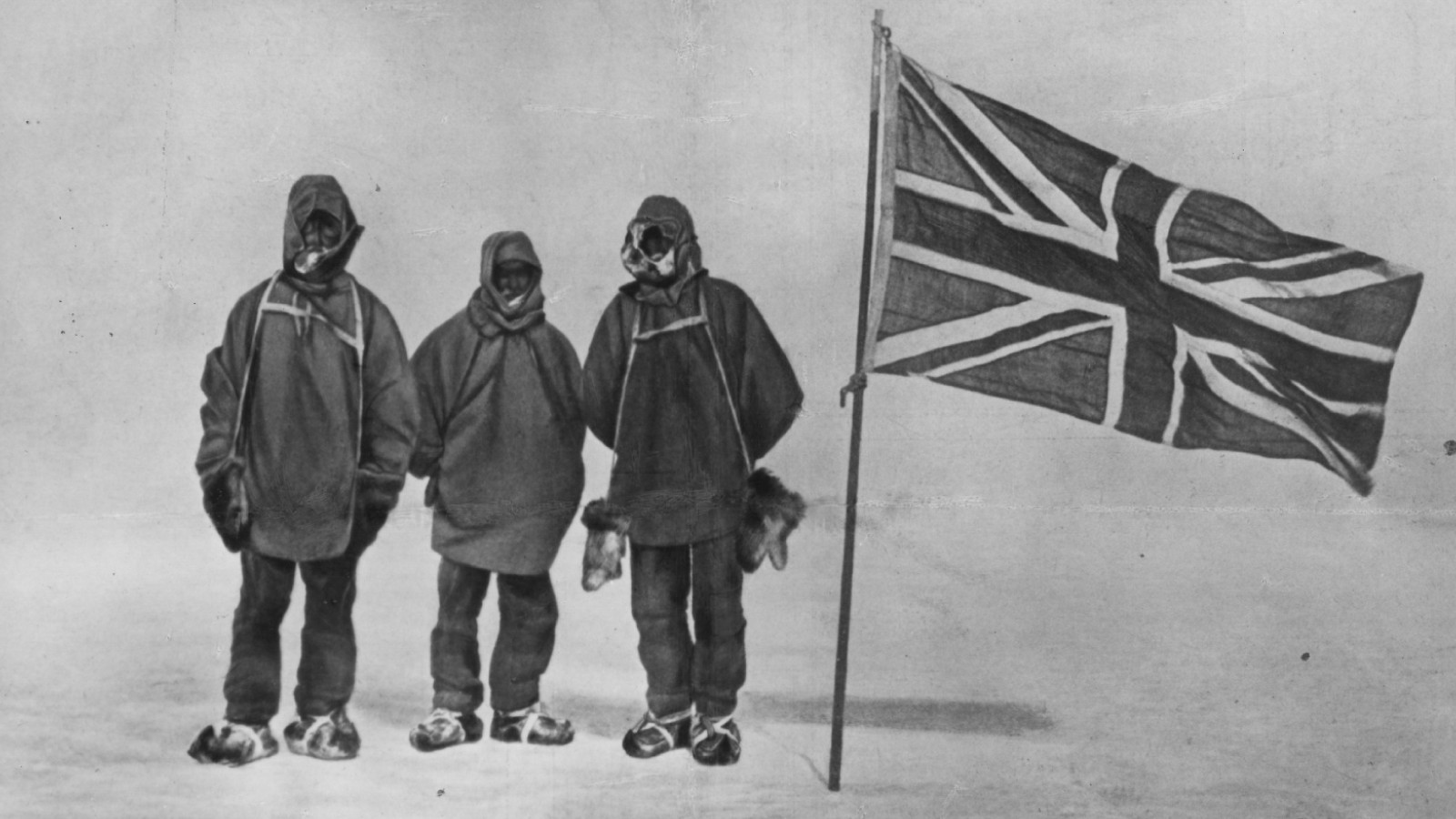Endurance Expedition: Shackleton's Antarctic survival story
The Endurance Expedition was a failed mission to cross the Antarctic on foot, leaving 28 explorers stranded.

The Endurance Expedition was a British mission to cross the Antarctic on foot in 1914-17. Launched in August 1914, the expedition became one of the most famous survival stories of all time after the expedition's ship, Endurance, became stranded and then sank during the voyage to the Antarctic.
The Endurance's crew became stranded on the remote Elephant Island and were only rescued over four months later, in August 1916, after expedition leader Sir Ernest Shackleton (1874-1922) left to seek help. The miraculous survival of the Endurance expedition crew earned Shackleton worldwide fame though his goal to cross the Antarctic on foot was never achieved.
The location of the sunken ship Endurance was lost for 107 years until being rediscovered on March 5, 2022.
Endurance Expedition
Formally known as the Imperial Trans-Antarctic Expedition, the Endurance Expedition to Antarctica began in August 1914. The crew sailed to the Weddell Sea via South Georgia. "His expedition would consist of two ships: one would drop supply depots for him and the other from the other side of the continent, which he would personally lead," British explorer and Shackleton biographer Sir Ranulph Fiennes told All About History magazine. "He hoped to cross Antarctica and make a famous name for himself over and above Scott."
On the other side of the continent, the second crew, called the Ross Sea Party, planned to drop off depot supplies from their ship Aurora. With a crew of 28 (including Shackleton), Endurance entered the Weddell Sea but became trapped in pack ice during Dec. 1914. Stuck fast in the ice, with the crew unable to break Endurance free, the ship drifted to within approximately 30 miles (48km) of Antarctica in January 1915, before drifting north.
Endurance was slowly crushed by the moving ice, until Shackleton ordered the crew to abandon ship on Oct. 27, 1915. The ship sank shortly afterwards and the crew escaped with three lifeboats and limited supplies. Shackleton led his men through the shrinking ice pack for months while they tried to reach land.

Shackleton's rescue mission
On April 9 1916, the Endurance Expedition crew left the ice floe in the lifeboats, reaching the uninhabited and remote Elephant Island on April 14. Ten days later, Shackleton set off to find help. He selected five crew members to join him and set sail in the 22.5-foot-long (6.9-meter-long) lifeboat called the "James Caird". He left the remainder of his men in the care of his second-in-command Frank Wild, who upturned the two remaining lifeboats to use as shelter.
Related: When did Antarctica become a continent?
Get the world’s most fascinating discoveries delivered straight to your inbox.
Shackleton and his small crew sailed over 800 miles (1,300 km) across the Southern Ocean to a group of whaling stations in South Georgia. The audacious rescue mission later became known as the Caird voyage after their small lifeboat. "It was the most amazing suffering over a long period. There were constant rebuffs and to be wet and cold is utterly debilitating," Fiennes said. "How none of them went completely mad over that period of floating is just incredible. I have never experienced hot or cold suffering that reminded me in an even miniscule way of Shackleton’s Caird voyage."

Shackleton and his men endured heavy seas, Force-9 winds and ice build-ups on the hull that threatened to capsize their vessel. Shackleton later recounted that the waves reached heights of over 100 feet (30 meters) and moved at speeds of 50 mph (80kmph). On May 5, 1916, the boat was even struck by a tidal wave that Shackleton initially mistook for the sky. He later wrote: "I have never seen a wave so gigantic."
The James Caird somehow survived the voyage, which Fiennes credits to Shackleton’s leadership. "They had already experienced Endurance sinking and lived on ice floes for months before trying to work out the safest way out. Whatever way Shackleton chose, death was the likely outcome but he kept cheerful."
After 17 days at sea, the James Caird landed on the southern coast of South Georgia — the opposite side of the island from their destination. After recovering from the voyage, Shackleton and two of his crew trekked for 36 hours across the island, reaching Stromness station on May 20. Shackleton next arranged a rescue ship to collect the remaining 22 crew stranded on Elephant Island.

After several aborted rescue attempts, Shackleton was lent a tugboat called Yelcho by the Chilean government and he finally reached Elephant Island on August 30, 1916. A smoke signal was sent from the shore while Shackleton approached the beach in a small boat. Figures emerged from the capsized lifeboats and when he was within earshot Shackleton called out: "Are you alright?"
“All well!” Came the reply. All the men on the island had survived. "It is an absolutely incredible survival story,” Fiennes said.
Fate of the second crew
The story of the Endurance's crew is a supreme example of survival against the odds. However, the neglected Ross Sea Party became stranded off Antarctica until January 1917. "Shackleton was criminally negligent in his planning for the other side," Fiennes said. "Three of the party (including the commander Aeneas Mackintosh) died and of course there was no way of knowing that the Endurance had sunk. The three men died horribly for nothing. They had actually managed to drop most of the food off, even though their ship with most of their kit had been caught in the ice and taken away before they had unloaded properly. It was a disaster.”
Because the story of Endurance has become so famous, the sufferings of the Ross Sea Party and the fact that Shackleton achieved none of his actual objectives during 1914-17 have almost been forgotten.
It wasn’t until Sir Vivian Fuchs’s Commonwealth Trans-Antarctic Expedition of 1955-58 that the first overland crossing of Antarctica was completed. Fuchs achieved this by using tracked snow vehicles and it wasn’t until Fiennes’ own mission, named the Unsupported Antarctic Continent Expedition (1992-93) that a crossing of Antarctica by foot was successful.
Shackleton's earlier expeditions
In 1901 Shackleton served as Third Officer under the command of Captain Robert Falcon Scott on the British National Antarctic Expedition, named after the expedition's ship 'Discovery'. The expedition was a milestone in British polar exploration, and the group conducted extensive scientific and geographical research into what was then a largely unexplored continent.
The Discovery Expedition also included an early attempt to reach the South Pole. Shackleton accompanied Scott and Dr Edward Wilson on this journey and they reached a ‘Farthest South’ record of 420 miles from the Pole on Dec. 30 1902.
During the attempt to reach the South Pole, Shackleton suffered from ill health, though this did not stop him continuing with the journey. “Shackleton did show an incredible willpower and it had to be greater than anybody else because of his illnesses," said Fiennes. "He had a weak heart and knew it so he wouldn’t allow anyone to test it. He also had lung problems, which were exacerbated by altitude… On all of his expeditions most people would have withdrawn with that state of health.”

In 1907, Shackleton returned to the Antarctic but this time he was in command of what was known as the ‘Nimrod’ Expedition. Along with fellow explorers Jameson Adams, Eric Marshall and Frank Wild he achieved the record for reaching the furthest south, in his attempts to once again reach the South Pole. "Shackleton got much further south by finding an inlet at Mount Hope to get to the Beardmore Glacier," Fiennes said. "He then got to within 97 miles of the South Pole, which was amazing. This was a world record and I would call it a success on the way to the ultimate success. It wasn’t a failure but Shackleton realised that his critics would deem him a failure because he hadn’t quite reached the Pole."
As well as reaching the farthest south, a separate group from the expedition reached the estimated location of the South Magnetic Pole. The expedition also achieved the first ascent of Antarctica’s second-highest volcano, Mount Erebus, and Shackleton was knighted by Queen Victoria upon his return.
Additional reading
Historian Dan Snow spoke to Ranulph Fiennes about his research into Shackleton's expedition and his own Antarctic exploring. The Royal Geographical Society has a wealth of fantastic home-schooling, classroom or personal study resources on Shackleton's Antarctic expeditions.
Bibliography
- "Shackleton: A Biography" Ranulph Fiennes (Michael Joseph, Penguin Random House, 2021)
- Alfred Lansing, Endurance. The true story of Shackleton’s incredible voyage to the Antarctic (Phoenix, 2003)
- Shackleton Endurance Expedition - Timeline, Royal Geographic Society
- Ranulph Fiennes' expeditions and challenges, Marie Curie
- Navigation of the James Caird on the Shackleton Expedition, Records of the Canterbury Museum, 2018 Vol. 32: 23–66 Canterbury Museum 2018
- THE ANTARCTIC PHOTOGRAPHS OF FRANK HURLEY, HERBERT PONTING AND CAPTAIN SCOTT

Tom Garner is the Features Editor for History of War magazine and also writes for sister publication All About History. He has a Master's degree in Medieval Studies from King's College London and has also worked in the British heritage industry for the Shakespeare Birthplace Trust, as well as for English Heritage and the National Trust. He specializes in Medieval History and interviewing veterans and survivors of conflicts from the Second World War onwards.
- Timothy WilliamsonEditor-in-Chief, All About History


